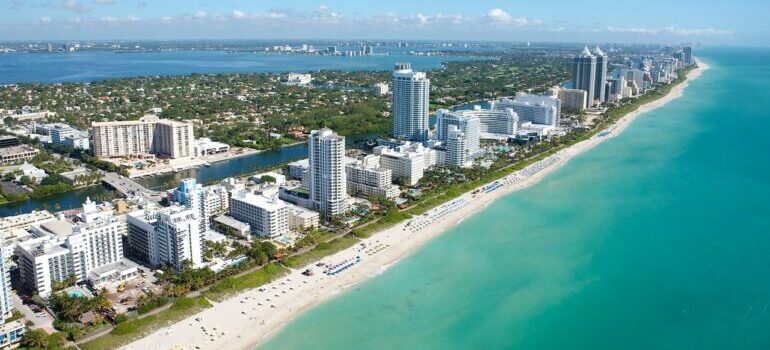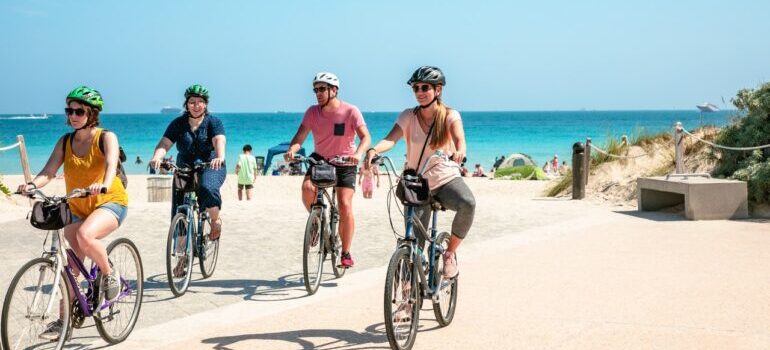Moving to the southern part of the Sunshine State can be one of the best decisions you will ever make. The residents of South Florida have the privilege to enjoy a tropical climate, beautiful nature, and an abundance of outdoor activities. South Florida is an amazing place and it has something to offer to everyone. If you decide to move to South Florida, you will have easy access to the ocean, there will be no winter months and you will have numerous diverse places to choose from. However, if you are still thinking about relocating to the Sunshine State, Verified Movers is here to tell you all you need to know about the move to South Florida.
Pros and cons of living in South Florida
No matter which city in South Florida you choose to live in, there are some pros and cons that apply to the entire state. Before you call top movers in Miami, take a moment and think about how this can influence your lifestyle. So, this is what you can expect when you move to Sunshine State.

Once you decide to move to South Florida, you should get to know this wonderful state and see how much it can offer you.
Sunny and hot weather
One of the number one reasons to move to South Florida is for the beautiful warm weather and sunny days. Given that Florida is the warmest state in the US, it is no wonder that a lot of people come here. You will love living in South Florida during the winter months. While the rest of the country is snowed, you will be enjoying lovely weather.
However, for some people, this great perk can be a major con of loving in South Florida. During the summer months, there is a lot of heat and humidity and that can be annoying. However, you can think there will not be hot in Sunshine State.
Gorgeous beaches and parks
If you have visited South Florida before, you must admit that the beaches here are magnificent. If you move to the island, a beach will never be far away. Besides world-class beaches, South Florida has also a number of exquisite parks. They are full of greenery, so people have a place to hide when it is hot. Every park in South Florida is carefully maintained and all of them are perfect for a romantic picnic or to spend a day with your loved ones.

In South Florida, you will have a chance to enjoy wonderful beaches and numerous outdoor activities.
Cost of living
One of the major perks of making South Florida your home is the cost of living. The cost of living in the Sunshine State is much cheaper than in other parts of the United States. There is no income tax which is a great benefit. Even though there are some fancy neighborhoods, you can still buy or rent an apartment at a very affordable price.
Cultural diversity
The first time you visit South Florida, you will realize that it is one of the biggest melting pots in the USA. If you go to Miami, you will be amazed when you see how many people of different religions and ages are there. All of them have found a reason to make South Florida their home. Some enjoy great weather, others are here because of the low cost of living and many job opportunities. However, for some people, this can be a disadvantage of living in South Florida.

Learn as much as you can about South Miami, so you will know what to expect when you relocate.
What to do before you move to South Florida
Once you decide to relocate to South Florida, there are a couple of things you should do prior to your moving date. We all know that moving is an overwhelming process, especially if you are relocating to another state. Thus, before you move to South Florida, you should do the following:
- Explore South Florida before your move – Before you start packing your bags and reading moving companies reviews South Florida, you should go and pay a visit to South Florida. Get to know the Sunshine State and see what to expect. Of course, you can find a lot of information online. However, seeing how your life would look like by yourself is much more valuable. The experience will give you the ability to assess whether you can adapt to the lifestyle of South Florida or not.
- Search for a place to live in – Choosing your new home is not easy and you should consider a lot of things before you move to South Florida. If you are moving with a family, you will want a safe place with good schools. You will choose a home near your office if you are moving because of work. To find the perfect place that will meet all your needs, write down all your requests and demands before you start looking for a home.
- Relocation – After you have found the right place, you can start planning the move. We know that this process can be nerve-wracking. However, if you find a reliable moving company to help you, your relocation to South Florida will go smoothly and efficiently. The professionals will do all the heavy work for you, and provide you with stress-free relocation.
Before you look for state to state movers reviews South Florida, it would be advisable to get to know South Florida. In order to be well-prepared for the move, you first need to know what to expect from your move to South Florida. Hopefully, we have given you all the information you need. We are sure you will love living in this wonderful and exciting Sunshine State.




